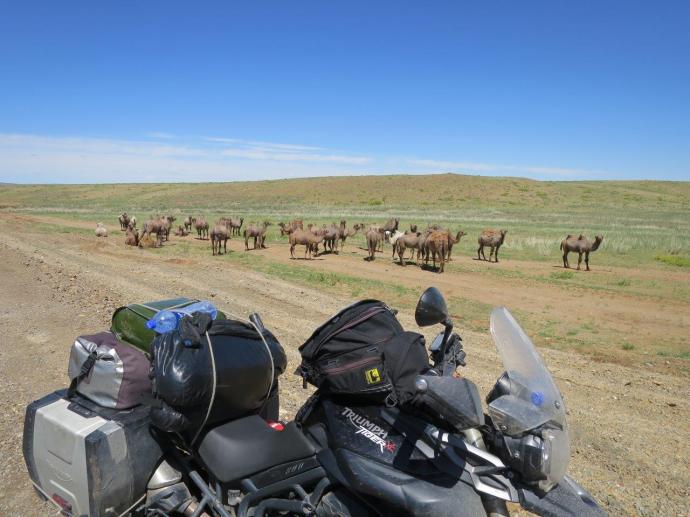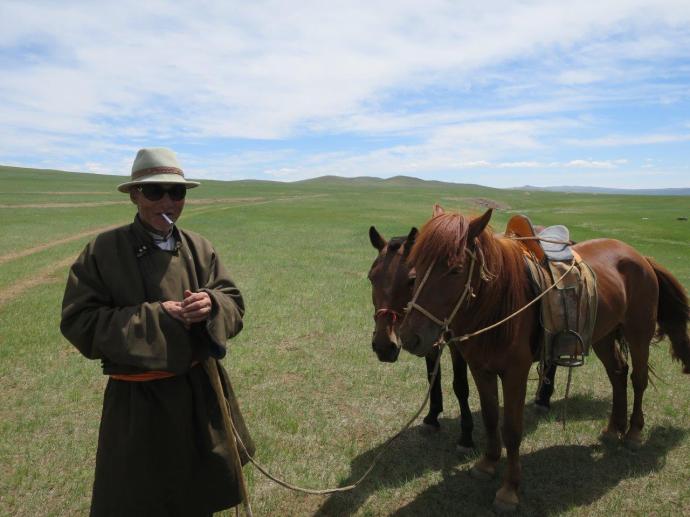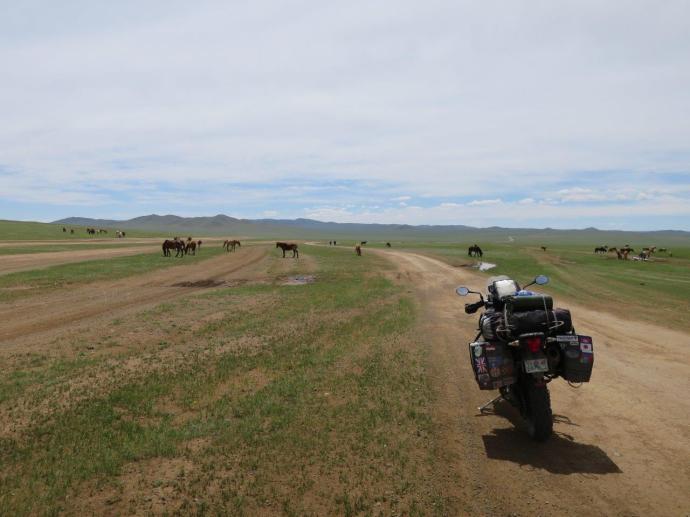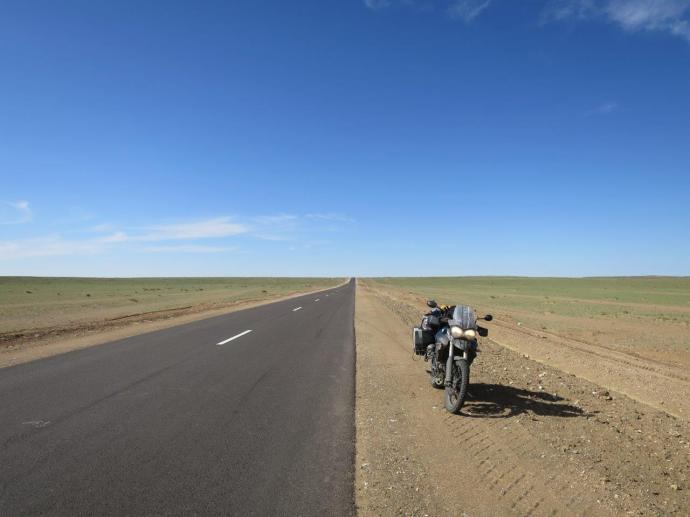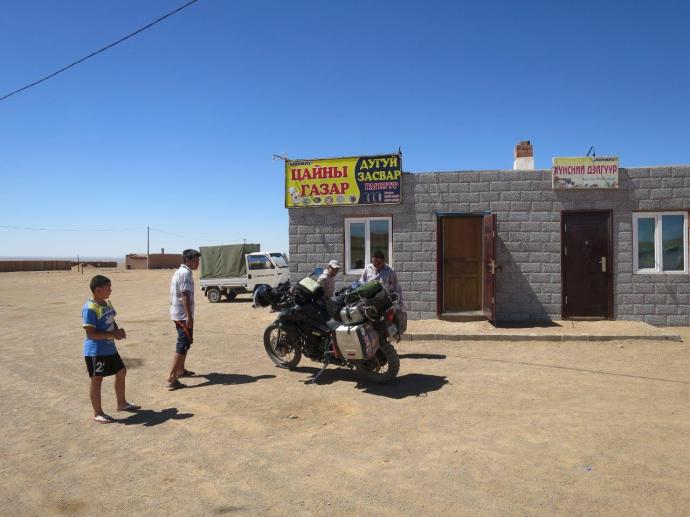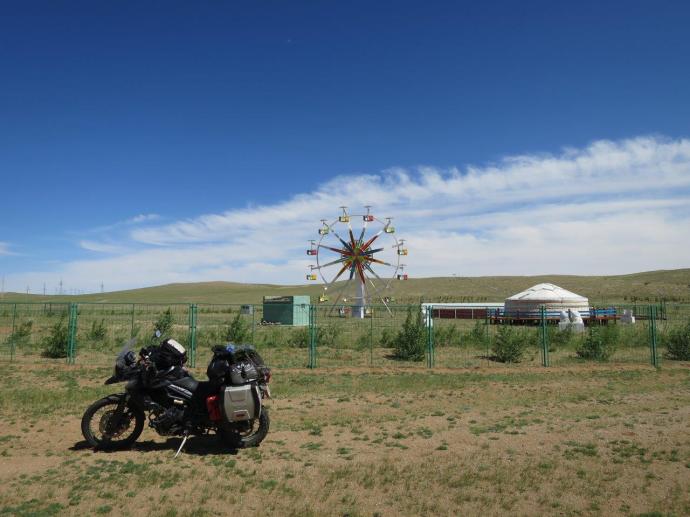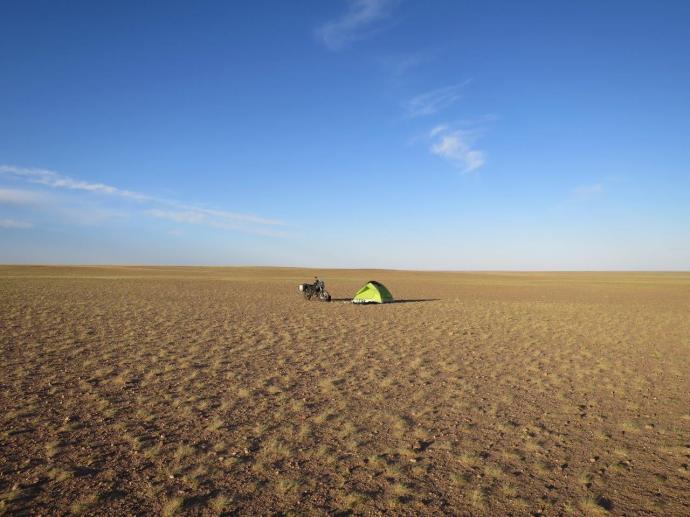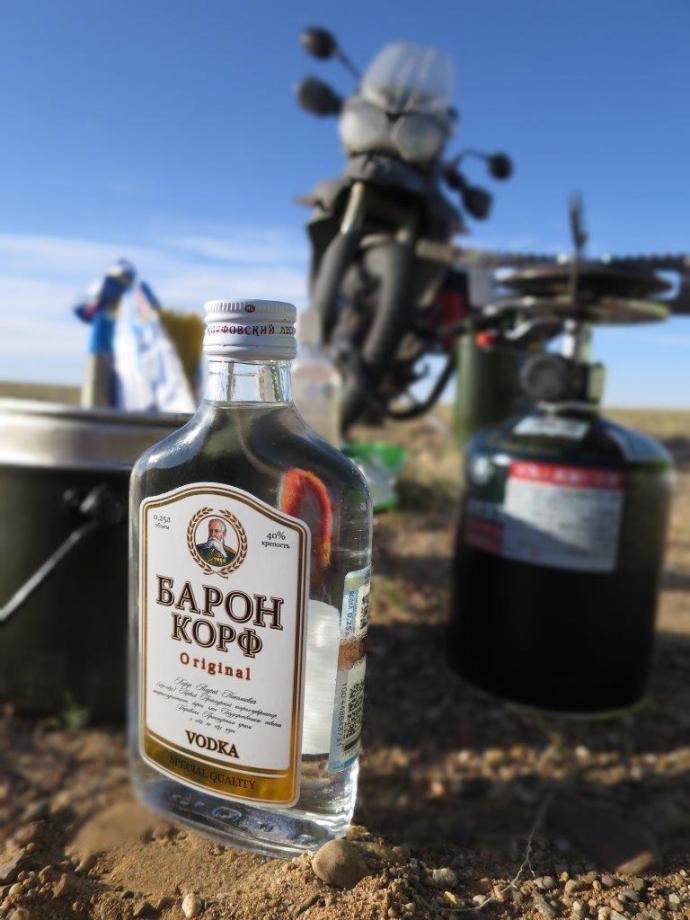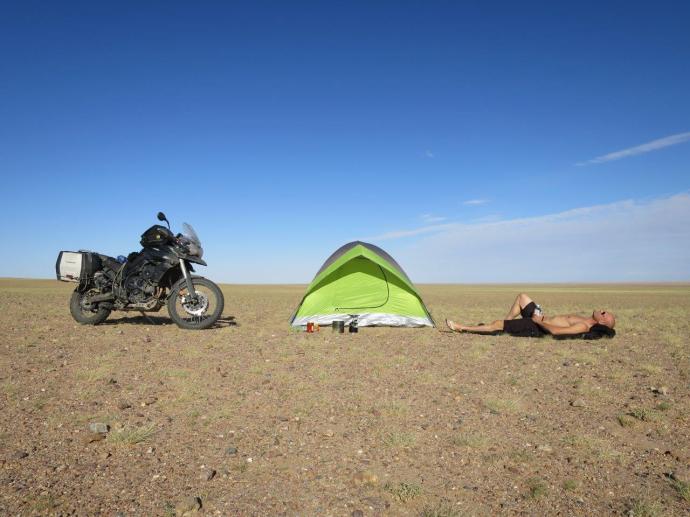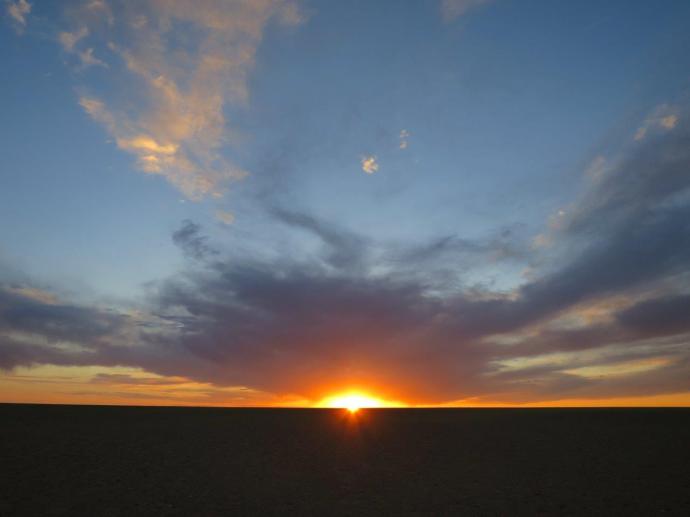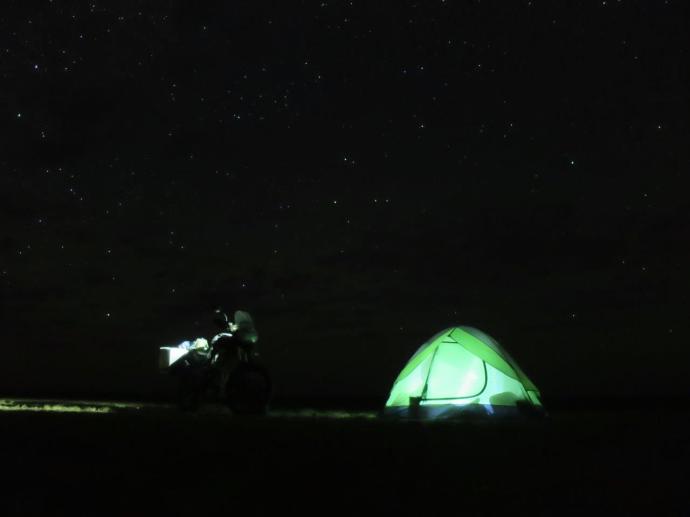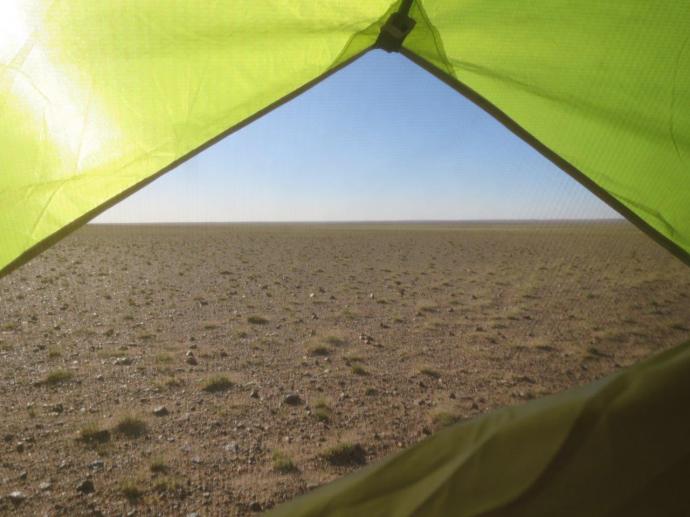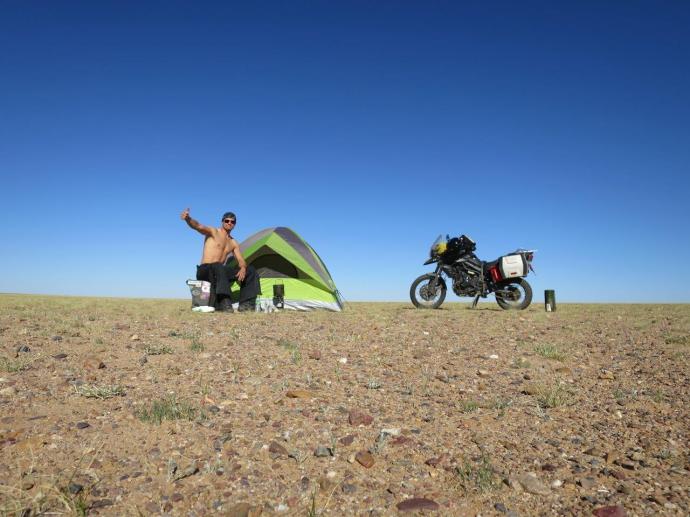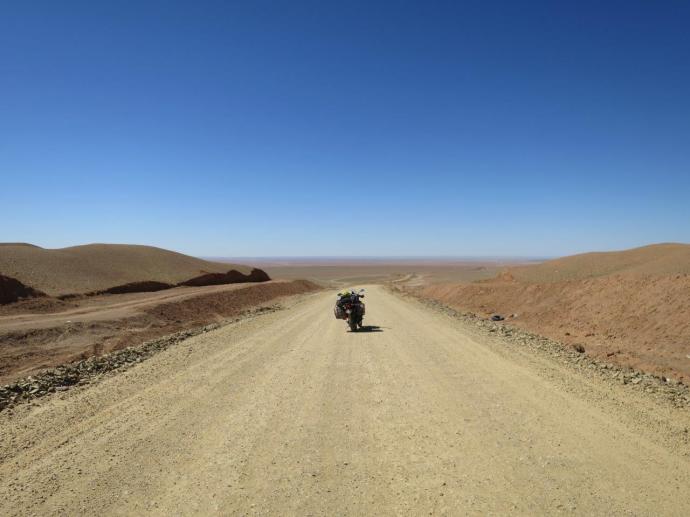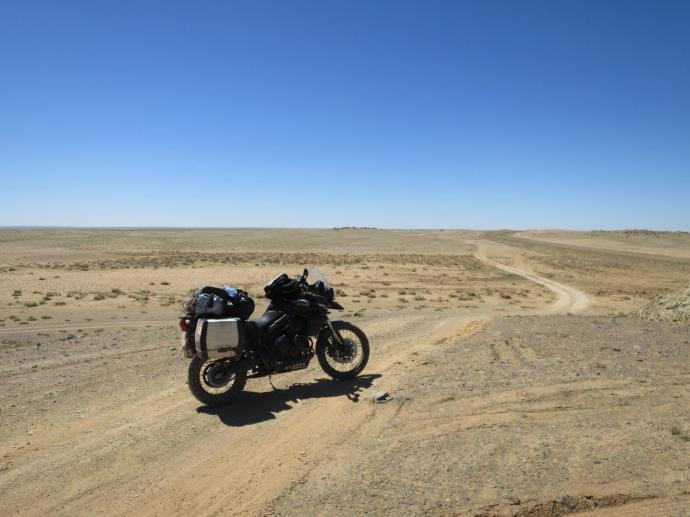I saw my first Mongolian camels on the ride down to the Gobi, and thought I must be getting near the desert.
I stopped to take a photo and left my shades on the pannier as I rode off. I remembered 30m down the road when I was blinded by the sun, and turned around to look for them. I hadn’t seen another vehicle for about an hour, and Sod’s Law decided an 18 wheel juggernaut would suddenly appear and run over them as I watched. Fabulous. Ever since losing my camera a similar way in Australia, I’m usually pretty good at remembering to check the bike before I ride off, but not this time. Luckily I had a spare pair from the 1950s, but they were better than nothing.
Bactrian camels are native to this area and most of them are domesticated and farmed by local herdsmen. They’re pretty handy creatures – they can go without water for a week, without food for a month, and provide plenty of wool, milk, meat and dung for fire; what else could you ever need (apart from sunglasses)?
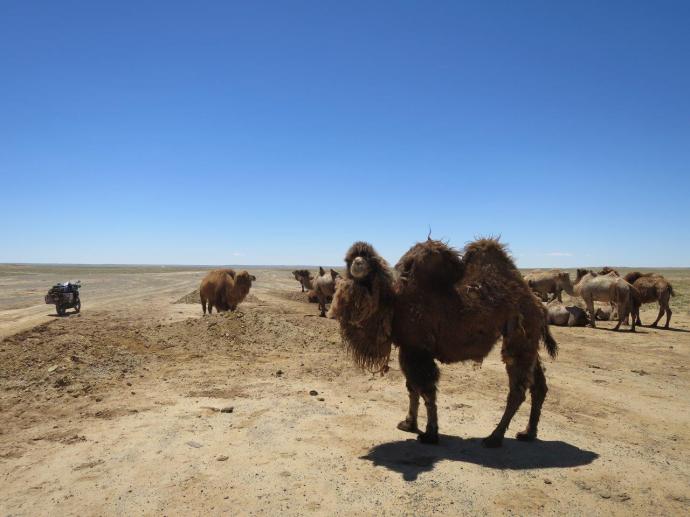
Bactrian camels can provide wool, milk, meat and dung for fire, but I’m told they won’t let you kiss them on the lips
From Ghorki-Terelj National Park I managed to find a rough track that bypassed UB to the south (thank goodness) and eventually joined a brand new surfaced road leading almost all the way to Mandalgovi, 300 km to the south.
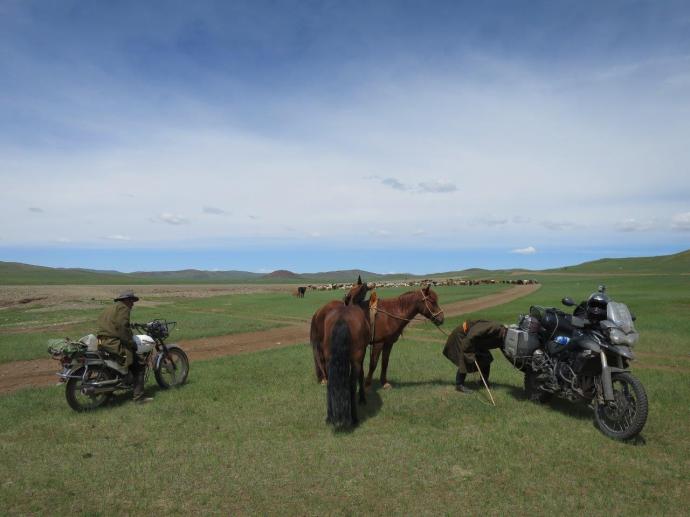
The last bit of green stuff before the Gobi. Local herdsmen were always interested in the Tiger’s rear end
As I rode into a small village for fuel and water I was pulled over by the Police for a routine check; at least I assume it was a routine check – nothing happened anyway, and they were nice enough.
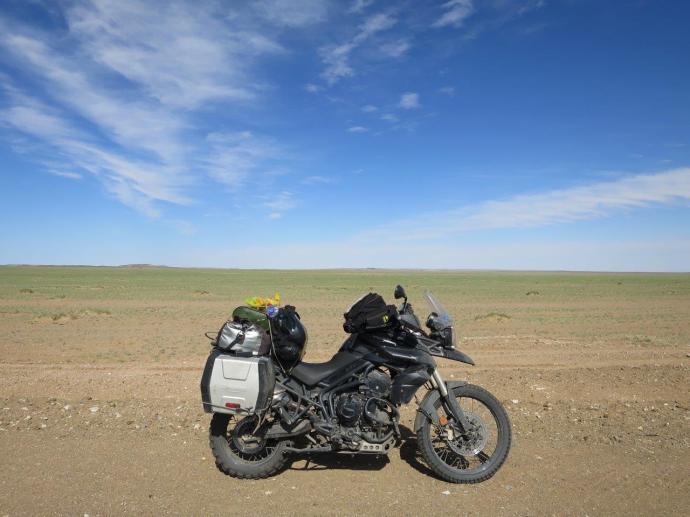
It was a beautiful day. At least it was unlikely to rain here, in one of the driest places on the planet
I found a local grocery to buy some supplies. Whenever I stop I am usually surrounded by interested locals swarming all over the bike, wanting to touch everything. I no longer leave the keys in the ignition, as people are not afraid to turn it on and rev the guts out of the engine. Strange this behaviour, but in Mongolia nothing on your motorcycle seems to be sacred.
By the side of the road, as I passed, I would often see the magnificent Golden Eagle feeding on some kill, but they always flew away before I could get my camera out. One of them took off as I passed and flew alongside the bike for a few awesome seconds – I wished I’d had my GoPro camera on!
Mandalgovi is just a small dusty town on the edge of the Gobi, but it does have a ferris wheel, in case you ever fancy a ride while you’re in the desert. Good thing was there was no queue.
It was a perfect sunny day with hardly a cloud in the sky, and although the new road was a pleasant ride I fancied getting off it and into the desert, so I did.
The Gobi is big – almost 1.3 million square km, bigger than the whole of South Africa. Not a traditional desert in terms of lots of sand dunes, the Gobi is mostly exposed bare rock covered in sand and stones making it easy to ride on. It is a ‘rain shadow desert’ on the wrong side of the Himalayas; it’s funny a mountain range can cause a monsoon on one side and a desert on the other.
It wasn’t long before I came across the skeleton of a horse (I think) – a stark reminder of the extreme environment I was entering.
Further on, there was nothing.
And I mean nothing.
For miles, and miles, and miles, and miles.
“What a perfect place to camp!” I thought, and immediately put up the tent.
Well in fact anywhere would have been the perfect place to camp, because it was all the same – flat and Gobi-ish.
There was complete peace and quiet – not a sound. The only signs of life I saw were a few beetles and a Gobi gecko. I sat on a small cactus and my bum still hurts.
While unpacking I noticed the fuel cap on my jerry can was leaking a little. I took the O-ring off, cleaned it and greased it with silicone, which seemed to do the trick.
I relaxed for a few hours and even had a little Gobi nap.
I woke up as the sun was sinking.
I cooked up a great dinner and enjoyed the cool breeze that rushed in after sunset. It turned into quite a strong squall and I thought the tent was going to blow away for a minute, but then thankfully it went quiet again. I’d noticed a couple of the tent poles were splitting down the middle so I wasn’t sure how much longer it would last; I hoped at least until I got back into Russia where I could probably buy a new one if needed.
The air was ridiculously dry, as you might expect, which was great because the washing up dried in almost an instant.
The sunset was spectacular.
And then the stars came out.
With no light pollution for miles, it was one of the clearest nights I’ve ever seen.
I hoped my sleeping bag would be warm enough for the well-known rapid temperature changes that can occur in the Gobi – as much as 35 degrees C (63 F) within 24 hours, from –40 degrees C (–40 F) in winter to +50 C (122 F) in summer. It was – plenty – but it didn’t really get that cold.
In the morning I woke up and thought I was in an oven. It was roasting, but still perfectly silent and still. I felt as if I was the only one around for hundreds of miles; maybe I was.
It was going to be a scorcher with not a cloud in the sky. I cooked some breakfast before packing up.
On the next 300 km to Dalanzadgad the new road had disappeared (but will probably be built soon) and I was back on rough track.
The track was good quality most of the time, and I had some fun on the bike. I was heading to Yolyn Am, ‘The Valley of the Eagles’ – a canyon I had read about filled with ice in the desert.

